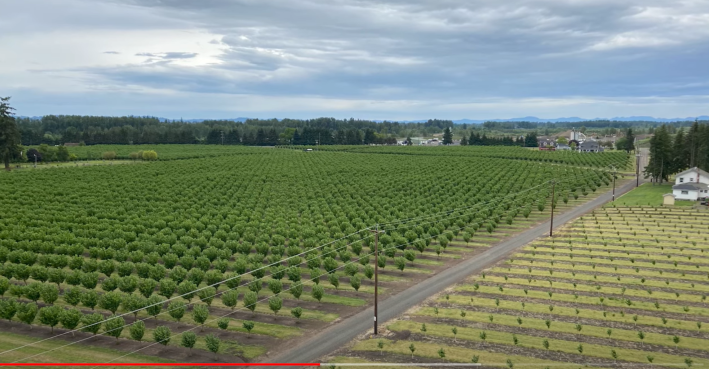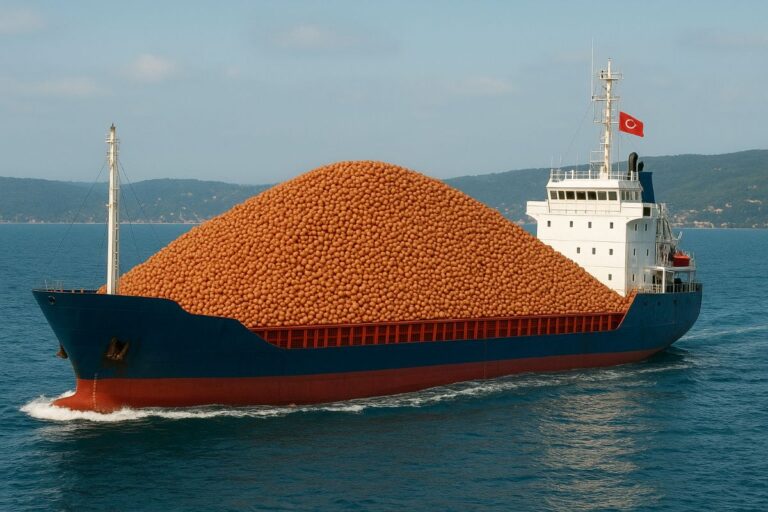Hazelnut yields fall short of expectations
After the USDA predicted a record hazelnut crop in 2018, yields are coming in short of expectations, according to Oregon processors.
Oregon hazelnut growers were anticipating a record-high crop in 2018, though it appears the harvest is coming in short of expectations.
The USDA National Agricultural Statistics Service predicted 52,000 tons of hazelnuts in August, which would have beaten the previous record of 49,500 tons in 2001. Instead, local processors say they are looking at between 46,000 to 48,000 tons, which is higher than last year’s total of 32,000 tons but still not on par with increases in handling capacity.
Larry George, president and CEO of George Packing Company in Newberg, Ore., said he does not know exactly why hazelnut yields did not meet record forecasts. He said it looks like one of the primary new nut varieties, named Jefferson, did not perform as well as previously thought when the orchards were planted in 2007.
“I think the new varieties, for whatever reason, we just overestimated what their production would be,” George said.
George said it is also possible growers harvested fewer early season orchards due to low prices caused by economic turmoil overseas, including Chinese tariffs and currency devaluation in Turkey, the world’s leading producer of hazelnuts.
“We’ll know in a few weeks,” he said.
Whatever the reason, a less-than-expected hazelnut crop does not bode well for processors such as George Packing Company, which has invested millions of dollars to increase capacity. Hazelnut acreage has roughly doubled in Oregon over the past decade, up to 72,353 acres, spurred by new varieties such as Jefferson, Yamhill and McDonald that are resistant to Eastern Filbert Blight.
With the growth in acreage, George said there was a rush to expand alongside the orchards. Nearly all U.S. commercial hazelnuts are grown in Oregon, and George Packing Company is the industry’s largest processor and marketer.
But the volume simply has not arrived yet, George said, creating an overcapacity on production lines.
“You have this massive excess capacity and no huge volume to run,” he said. “We were excited about a record crop. We’re not the only ones who made significant investments, but it just never materialized.”
Patrick Gabrish, vice president of sales and marketing for Hazelnut Growers of Oregon, a member-owned co-op representing 150 local hazelnut farmers, said he is not overly concerned about lower yields. He is quick to point out that 33,000 acres of orchards still have not reached nut-bearing age. When they do, he said the spike in volume may help to stabilize prices and develop new markets.
“There’s going to be plenty of crop to work with over the next few years,” Gabrish said.
Both Gabrish and George raved about this year’s crop quality, aided by a dry harvest season that minimized mud and mold. Months of drought, however, also emphasized the need for growers to adopt irrigation and nutrient programs to maximize yields through difficult summers.
Nik Wiman, orchard specialist for Oregon State University, said growers with dryland hazelnut orchards should consider adding drip irrigation if they can. Meanwhile, the university continues to research nutrient requirements for new trees, as well as how best to defend against emerging pests and diseases, such as bacterial blight and the Pacific flatheaded borer.
“Everything we have is based on the old (nut) cultivars,” Wiman said. “We’ve been doing everything we can to update the nutrient requirements for the new trees.”
This year was already challenging for the hazelnut industry as a perfect storm of global factors combined to drive down prices for growers. First, China slapped a 15 percent and 25 percent retaliatory tariffs on the product from the U.S. in response to the Trump administration’s escalating trade war. Then, the Turkish lira plummeted in value, allowing the country to flood the market with cheap hazelnuts.
For the first time, growers accepted a three-tier price system at 62 cents per pound for in-shell hazelnut varieties, and between 81 and 91 cents per pound for “shell-out” varieties, which command more value for larger kernels.
That is lower than last year’s price of 96.5 cents per pound for all hazelnuts, and $1.18 per pound in 2016.
Terry Ross, executive director of the Hazelnut Growers Bargaining Association, said they system was meant to encourage growers to plant more shell-out varieties to tap into newer and potentially more lucrative markets.
“There is a lot of potential,” Ross said. “The future is bright.”
George Plaven
Published on November 12, 2018
Copyright: capitalpress.com






